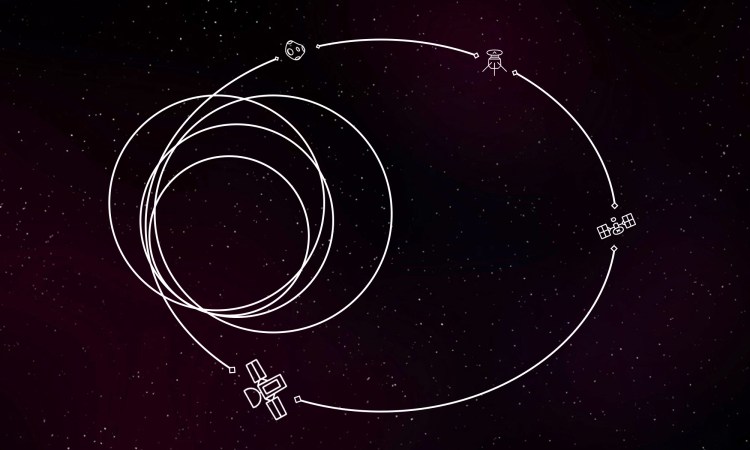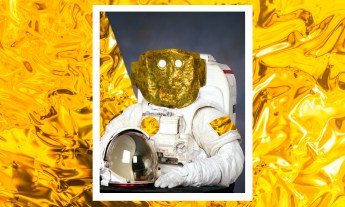
And you think your commute is bad. On November 12, 2014, the Philae probe finally landed on a comet some 10 years after it left Earth. Fred Jansen, who manages the mission for the European Space Agency, remembers some of the key moments that led up to the landing.
Very few people actually work on a long mission from “cradle to grave.” Instead, the project is split into phases, and everyone has their own ramp-up and activity period. That has its own implications. For instance, the people who build the instruments might be experienced engineers in their 40s or 50s. They might not be around to operate them 15 or 20 years after that. So for that reason, to preserve knowledge, we video everyone presenting what they did and why they did it. They give detailed presentations, speaking for five or ten minutes on how the instrument works, why they build it that way, what the strong points are, what the weak points. Everyone understands this is the way it is. After all, getting to outer space takes a long time. I officially joined the Rosetta team in June 2013, but I have been working for the European Space Agency since 1995, so I’ve always been aware of what was going on with the mission. Here’s a look at some of the key moments in its 11 years (and counting!) in space:

LAUNCH: March 2, 2004
What I remember most about the launch is that we’d had a canceled launch the previous year and also two cancelled launches a few days before, which meant that most of the media didn’t show up to the real launch day. So it was a strange, lowkey event. As with most launches, you can start to relax when the spacecraft is separated from the launcher, the solar arrays have unfolded and the craft is getting power. That typically takes a few hours.

1st EARTH FLYBY: March 4, 2005
A year later, we did the first Earth flyby. Throughout the mission, we did six flybys of planets and asteroids to gain velocity for the long trip. But in the early flybys, you’re not just aiming for an effect in velocity, you’re also using it to direct the probe in the right direction. The difficult part of navigating and planning is that you have to pre-stitch all of this together. You need to know where you need to be in space by what date, and so you have to shift conditions throughout the mission to make everything fit together over the entirety of a years-long mission. This is the very essence of rocket science.

MARS FLYBY: February 25, 2007
To do a successful flyby, you have to disable a lot of the spacecraft’s built-in safety mechanisms, which might sound counter-intuitive, but it’s because it wasn’t built for flybys … It was built to fly through empty space. The very act of a flyby is risky, and so you have to reorient the spacecraft’s systems to account for the new context. We’ll spend between six months and a year preparing for a flyby, which is typically over within an hour or so. It takes 20 minutes for the signal from the spacecraft to reach us back on Earth, so if there’s a problem it happened 20 minutes ago. Then, getting the real data on the exact trajectory a spacecraft achieved after a flyby typically takes a week. That’s when we know if we’ve been successful or if we need to make small course corrections.

2nd EARTH FLYBY: November 13, 2007
During these Earth flybys, several instruments on Rosetta collect images and other data so that the scientists can validate and calibrate the instruments.

ASTEROID STEINS FLYBY: September 5, 2008
On a flyby you go to a reasonably low altitude, thousands of kilometers. That both accelerates the spacecraft and diverts its path. The acceleration is the crucial part — that’s where you get the velocity of the planet around the sun for free. Compare it to being tied to a car with an elastic band. If you contracted the elastic band to zero, you’d end up overtaking the car. In this case, the elastic band is gravity.

3rd EARTH FLYBY: November 13, 2009
Earth is well suited for multiple flybys because it only takes 12 months to travel around the Sun. A year on Mars, for instance, is 23 months, so we could have used Mars but then the time between two possible flybys would have been longer, which would have meant we’d have been much longer in space.

ASTEROID LUTETIA FLYBY: July 10, 2010
The other important thing about flybys is that you change course. We needed an elliptical path to achieve the elliptical orbit of the comet, so you have to aim your approach such that the path gets more shallow in one direction and longer in the other. Rosetta certainly wasn’t the first to use this technique, it’s been used on many missions, but it’s an incredibly complicated process to stitch together.

DEEP SPACE HIBERNATION: June 8, 2011 – January 20, 2014
At this moment, Rosetta was at a distance from the sun that meant that there wasn’t enough power from the solar arrays to allow the spacecraft to operate normally. So at this point, we switch off almost everything … apart from three alarm clocks. Then we set Rosetta to spin around its axis and wait for the alarms to go off. Once you switch everything off, that’s it. We couldn’t communicate for the next two and a half years.
Once the alarm clocks go off (there are three of them to make sure that there’s consensus of opinion; we don’t just rely on one!) the spacecraft wakes up, stops spinning, calculates where the sun is, points its antenna back to Earth and transmits a signal back to us. If we hadn’t got that signal, there would have been a problem. As it so happened, a small issue meant the signal arrived some 20 minutes later than we’d expected. 20 nailbiting minutes!

COMET RENDEZVOUS MANEUVERS: May – August 2014
When we exited deep space hibernation and woke up the spacecraft, we were about 9 million kilometers away from the comet. At this point, the heat is on! We had about seven months to organize everything, prepare all the comet operations, test the interfaces and all that. At this point, there are hundreds of people working on the mission. There are 11 instruments on the probe, most of which want to look in different directions, so we have to check that everything is aligned and coordinated.

ARRIVAL AT COMET: August 6, 2014
At this point, we parked ourselves about 100 kilometers away from the comet and started to try and map the comet itself. This is the difficult bit: we had six weeks to map the comet and decide where to land, then a month to prepare the commands and the trajectory to get to the right spot in space to deliver the probe to the right spot on the comet. A Mars mission will take years and years! We had ten weeks.

PHILAE LANDING: November 12, 2014
Originally, we’d planned on landing the day before, but once we had determined the final landing spot, it was better to land a day later. Still, that’s not bad for ten years and 500 million kilometers. At this point, there’s a 20-35 minute delay in getting a signal. You’re in the control room thinking that these things are happening at the other side of space … and you have to wait 30 minutes to see if it happened okay or not. It’s pretty tense.

COMET CLOSEST TO THE SUN: August 13, 2015
As the comet’s activity is driven by the heat of the sun, that’s when its activity will be greatest … Between now and then, activity will increase 100 times in terms of material like gas or dust leaving the comet. So this is a key period for us, scientifically speaking.

MISSION END: October, 2016
Officially, the mission ends at the end of 2015, but it will certainly end in October 2016. At that point, Rosetta will once again be as far from the Sun as it was when it went into hibernation in 2011. So that makes this a natural end point for the mission, as we’ll almost be out of fuel by then too. One thing we’re discussing is that we could potentially land Rosetta on the comet to take measurements from right up close. You’d never do this normally, it’s incredibly risky, but because we’ll be so close to the end of the mission we could tolerate more risk than usual. I’m not one for overstatement, but it would be pretty spectacular.
Icons courtesy Hungarumlaut.












